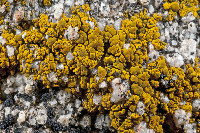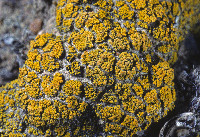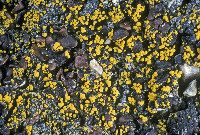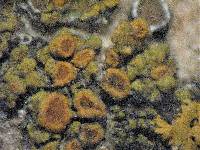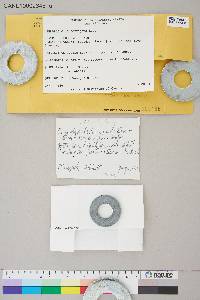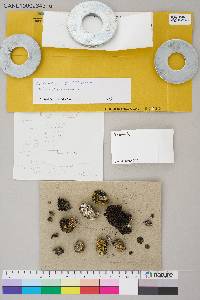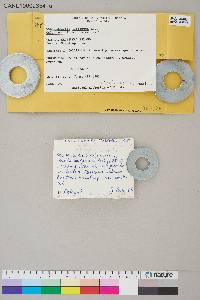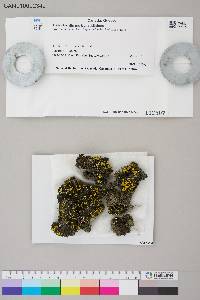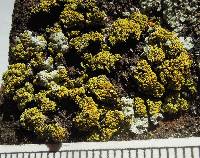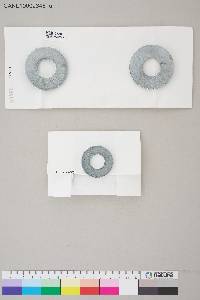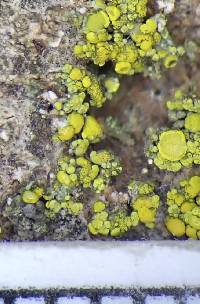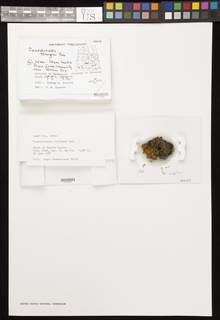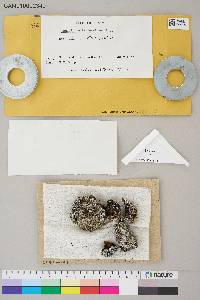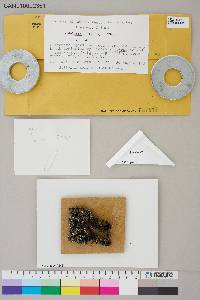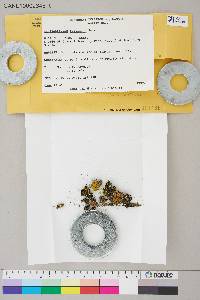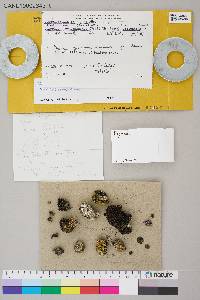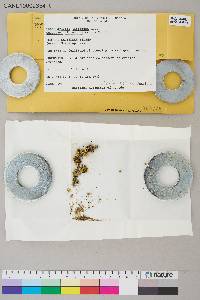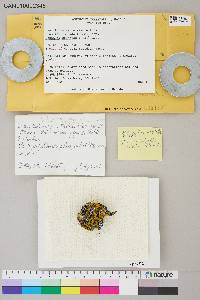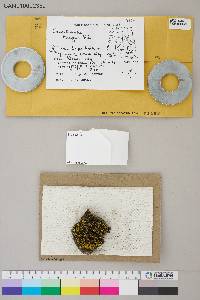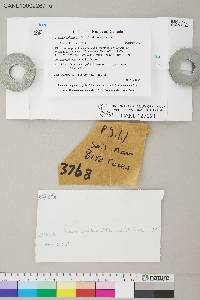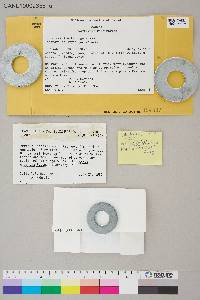
Consortium of Lichen Herbaria
- building a Global Consortium of Bryophytes and Lichens as keystones of cryptobiotic communities -
- Home
- Search
- Images
- Species Checklists
- US States: O-Z >
- US National Parks
- Central America
- South America
- US National Parks
- Southern Subpolar Region
|
|
|
|
Family: Candelariaceae
[Candelariella terrigena Räsänen, moreCandelariella terrigena var. plaeodiomorpha Hakul., Candelariella terrigena var. terrigena Räsänen] |
Thompson, J., 1997. American Arctic Lichens: The Microlichens. Thallus of bright yellow granules, either dispersed or agglomerated on the substratum; not sorcdiate. Apothecia entire or with crenulate margins; disk more orange than margin, flat, smooth or roughened; hypothecium slightly darkened; epithecium yellow; hymenium 50-60 μm, 1+ blue; paraphyses simple or sparsely branched, septate, 3-4 μm thick; asci clavatc; spores 8, hyaline, simple to partly 1-septate, ovoid to ellipsoid, straight or slightly curved, 14-18 x 6-8 μm. This species grows on humus and soil. It is known from Greenland and trans-Canada to Alaska, south to Colorado and New Mexico. Nash, T.H., Ryan, B.D., Gries, C., Bungartz, F., (eds.) 2004. Lichen Flora of the Greater Sonoran Desert Region. Vol 2. Thallus: composed of small convex areoles developing into lobate squamules squamules: appressed to ascending, rounded in outline or weakly to moderately incised or lobate, up to 0.6 mm long and 0.5 mm wide, scattered to crowded to imbricate, sometimes forming thick cushions upper surface: mostly green yellow, sometimes yellow to orange yellow in parts, mostly "pruinose" upper cortex: pseudoparenchymatous, 7-15 µm thick lower cortex: , similar to the upper cortex but thicker, 10-25 µm thick Apothecia: common, lecanorine, 0.3-0.8 mm wide disc: darker yellow than the thallus, round, ±flat margin: thick, entire to somewhat crenate, concolorous with the thallus exciple: thin, not or only faintly visible from the outside epihymenium: yellow-brown hymenium: hyaline, 60-80 µm tall; paraphyses: simple, cylindrical or with somewhat swollen tips; hypothecium: hyaline asci: clavate, 8-spored ascospores: hyaline, simple to 1-septate, ovoid to citriform or teardrop-shaped, the majority of the spores have one or both ends pointed or at least attenuate, 10-15.5 x 5.5-7 µm Pycnidia: common, appearing as yellow-orange warts on the squamules conidia: hyaline, ellipsoid, 3-4 x 1.5-2 µm Spot tests: K- to K+ reddish, KC-, C- Secondary metabolites: calycin, pulvinic acid, pulvinic dilactone and vulpinic acid. Substrate and ecology: over calcium-free rocks but mostly not directly on the rock but on soil in crevices, on mosses or on other lichens, occasionally also on bark World distribution: southwestern North America, north to at least, Utah and Colorado Sonoran distribution: widespread throughout the region in Arizona, southern California, and Baja California. Notes: Candelariella citrina is a very common species in the southwestern parts of North America but has usually been identified as C. rosulans in the herbaria. It is charatcerized by its short spores, that have one or both ends pointed. The thallus is variable in color and shape but often characteristic with greenish squamules with a coarse "pruinose" surface. Frequently it grows together in mixed stands with C. rosulans, C. "complanata" and Candelina submexicana. Candelariella terrigena, a younger synonym to C. citrina (Westberg in prep.), has been a misunderstood name applied to various material growing on soil. |
|
|
|
Powered by Symbiota






